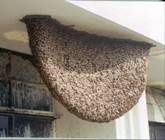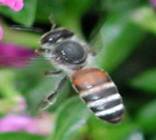TYPES OF HONEY BEE
Five important species of honey bees are as follows.
- The rock bee, Apis dorsata (Apidae).
- The Indian hive bee, Apis cerana indica (Apidae).
- The little bee, Apis florea (Apidae).
- The European or Italian bee, Apis mellifera (Apidae).
- Dammer bee or stingless bee, Melipona irridipennis (Meliporidae).
The important features of these species are given below.
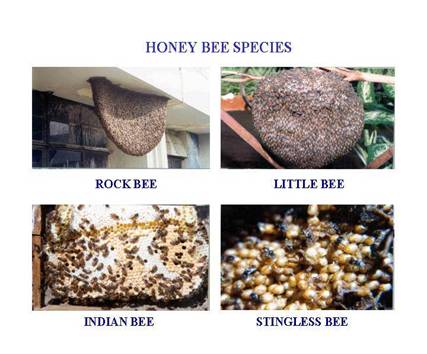
Rock bee (Apis dorsata)
They are giant bees found all over India in sub-mountainous regions up to an altitude of 2700 m. They construct single comb in open about 6 feet long and 3 feet deep .They shift the place of the colony often. Rock bees are ferocious and difficult to rear. They produce about 36 Kg honey per comb per year. These bees are the largest among the bees described.
Little bee (Apis florea)
They build single vertical combs. They also construct comb in open of the size of palm in branches of bushes, hedges, buildings, caves, empty cases etc (Fig. 2). They produce about half a kilo of honey per year per hive. They are not rearable as they frequently change their place. The size of the bees is smallest among four Apis species described and smaller than Indian bee. They distribute only in plains and not in hills above 450 MSL.
Indian hive bee / Asian bee (Apis cerana indica)
They are the domesticated species, which construct multiple parallel combs with an average honey yield of 6-8 kg per colony per year. These bees are larger than Apis florae but smaller than Apis mellifera. They are more prone to swarming and absconding. They are native of India/Asia.
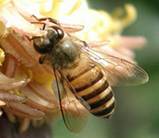 |
 |
Indian bee and its hive |
European bee / Italian bee (Apis mellifera)
They are also similar in habits to Indian bees, which build parallel combs. They are bigger than all other honeybees except Apis dorsata. The average production per colony is 25-40 kg. They have been imported from European countries (Italy). They are less prone to swarming and absconding.
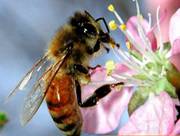
|
European bee |
Dammer Bee
Besides true honey bees, two species of stingless or dammer bees, viz. Melipona and Trigona occur in our country in abundance. These bees are much smaller than the true honey bees and build irregular combs of wax and resinous substances in crevices and hollow tree trunks. The stingless bees have the importance in the pollination of various food crops. They bite their enemies or intruders. It can be domesticated. But the honey yield per hive per year is only 100 gms.
 |
 |
Dammer bee hives |
|




